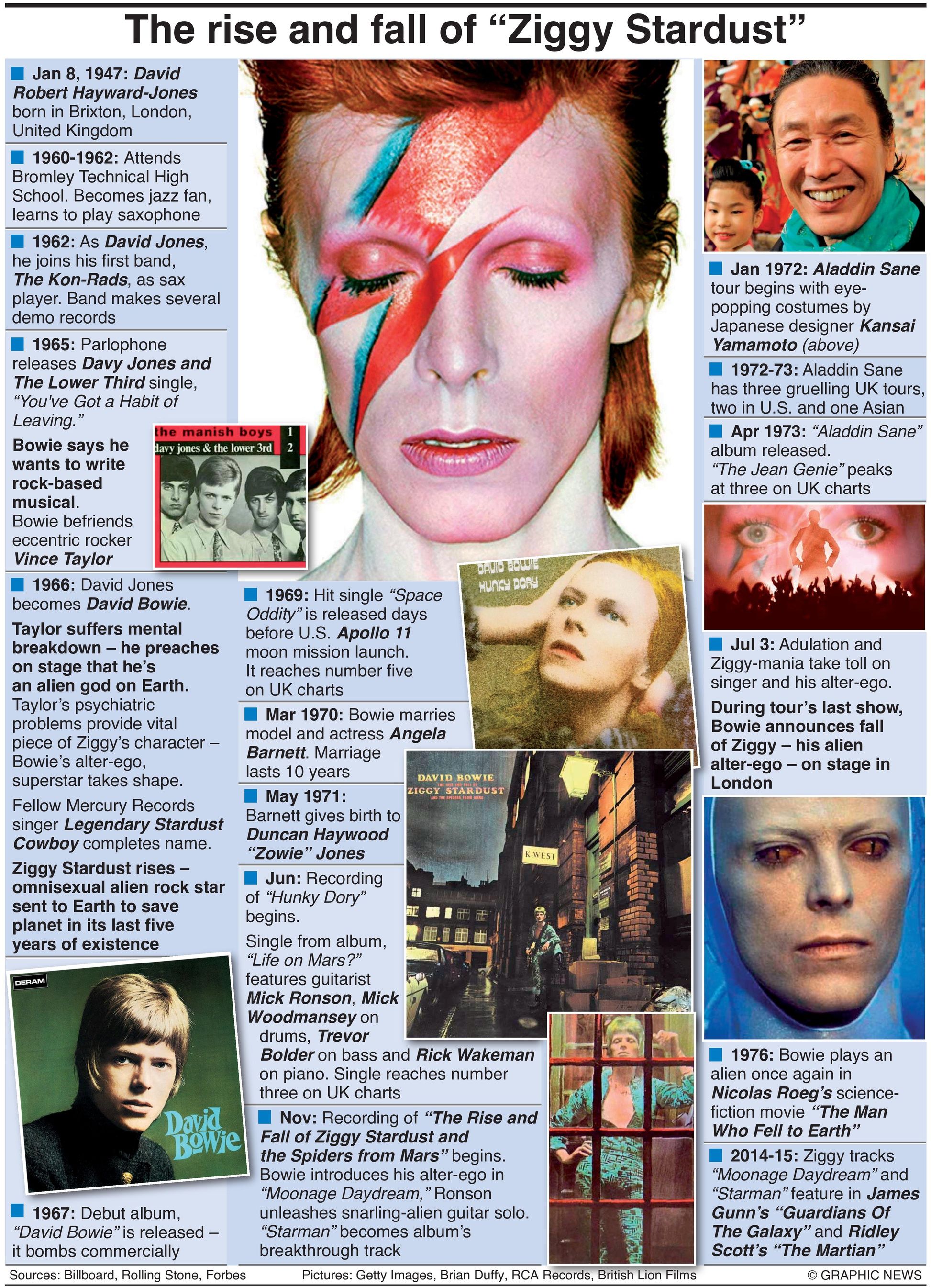During the mid-Sixties, teenage David Bowie planned to write a rock-based musical. By 1971, he had created his alter-ego superstar -- an androgynous alien rock star sent to Earth to save the planet in its last five years of existence.
“The Rise and Fall of Ziggy Stardust And The Spiders From Mars” is Bowie’s fifth album. At Trident Studios in London’s Soho, Ziggy is recorded for RCA in about two weeks from November 1971.

Bowie co-produced the album with Ken Scott, a studio engineer for The Beatles, and Elton John, who co-produced the preceding “Hunky Dory” and the following “Aladdin Sane” and “Pin-Ups.”
Ziggy used the band from the “Hunky Dory” sessions -- guitarist and arranger Mick “Ronno” Ronson, bassist Trevor Bolder, and drummer Mick “Woody” Woodmansey -- The Spiders From Mars.”
“Nothing was recorded 100 percent live, and there were overdubs on every track,” Scott remembered. Trident Studios had installed a state-of-art 3M M56 16-track tape machine, so tracks were overdubbed with an 8-4-2 string section: eight violins, four violas, and two cellos.
According to Scott’s memoir “Abbey Road To Ziggy Stardust” (co-written with Bobby Owsinski), almost all the vocals on Ziggy’s eleven tracks were done in a single take.
The album starts with “Five Years,” in which Bowie describes a scenario where the Earth is dying, and the world needs Ziggy and his Spiders.
Bowie introduces us to his alter-ego on the iconic third track, “Moonage Daydream” -- with a baritone sax and recorder chorus playing the same line a couple of octaves apart -- and finishing with Ronno’s snarling alien guitar solo.
“Lady Stardust” puts the story of Ziggy and his Spiders into context, while “Starman” becomes the album’s breakthrough track.
The record ends with “Rock & Roll Suicide,” a song featuring Bowie’s acoustic guitar work while adding a brass section comprising two trumpets, trombones, tenor saxes, and baritone sax.
Ziggy and The Spiders shoot musical chameleon Bowie into inter-galactic fame, while his iconic style leaves a mark on generations of fans.
Source: Graphicnews





